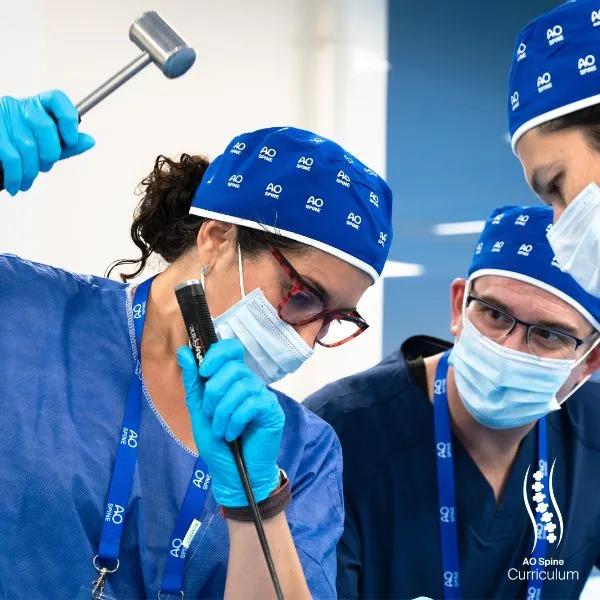Spinopelvic fixation
1. Introduction
NOTE: This procedure should only be performed by highly trained surgeons.
Lumbo-sacral dissociation is caused by high energy and is commonly associated with other fractures as well as neurological deficit.
It is essentially a multiplanar sacral fracture with vertical and horizontal components (C3 fractures), which results in detachment of the lumbo-sacral spine from the pelvic ring.
This injury can be viewed as having two primary fracture "fragments":
- The upper central sacrum and remainder of the spine
- Lower and peripheral sacrum and the attached pelvis
The sacrum is the lowest part of the spine and the fracture has the characteristics of spinal fractures.
A multidisciplinary approach is highly advisable.
For the fixation, knowledge of both spinal and pelvis fixation techniques is necessary. In cases of neurological deficit, decompression of sacral nerve roots is mandatory.
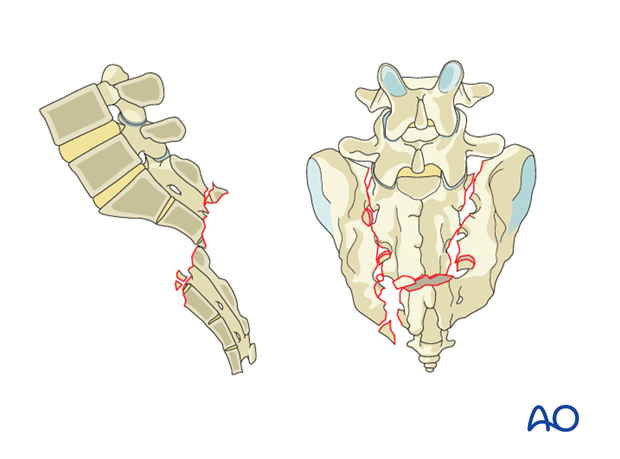
The fixation should ideally allow early mobilization; even for patients with neurological deficits.
In cases of large displacement, reduction is difficult and great care should be taken to avoid further damage to the neurological structures.
With minimal displacement in the absence of neurological deficit, fixation in situ is recommended.
Spino-pelvic fixation allows a complete exclusion of the fractured sacrum from weight bearing.
The essence of this procedure is to provide a rigid fixation to protect healing, allow rapid mobilization and avoid pseudoarthrosis.
Although some malunion can be accepted, care should be taken to avoid significant leg length discrepancy and spinal sagittal malalignment.

2. Positioning and approach
This procedure is performed with the patient placed prone through a midline or paramidline approach.

3. Neural decompression
If open reduction and foraminotomy are required, after exposure is completed, identify and remove small bony fragments from the comminuted fracture zone. They may be located in the transforaminal region and may hinder fracture reduction.
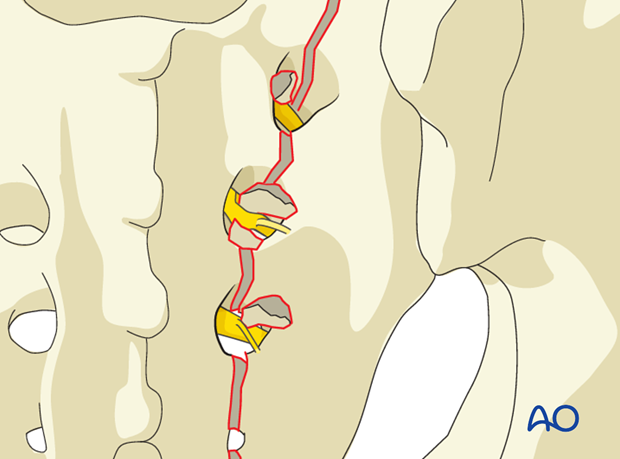
The complete fracture line has to be cleaned out and inspected.
Enhance the exposure by using a lamina (bone) spreader.
Extract fragments that may compromise the sacral nerve roots.
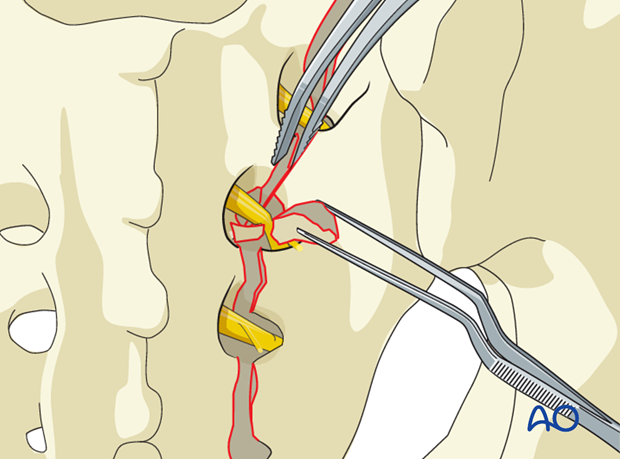
Additional foraminal patency can be achieved with the use of Kerrison rongeurs or high speed rotational burr to expand the nerve root channel.

4. Reduction
ISS fixation requires an essentially anatomically reduced sacral fracture. Significant residual displacement renders this procedure unsafe.
Displacement may make it impossible to accomplish ISS fixation without causing nerve root injury or resulting in an extraosseous screw that threatens adjacent neurovascular structures.
If displacement remains significant after closed reduction, open reduction should be considered.

Reduction of type C3 injuries depend on the ability to obtain appropriate fracture length and alignment.

Restoration of length
Approximately 10 Kg of traction applied to a distal femoral traction pin usually suffices.
It is important to avoid pressure by the traction bow on the peroneal nerve at the level of the fibular head.
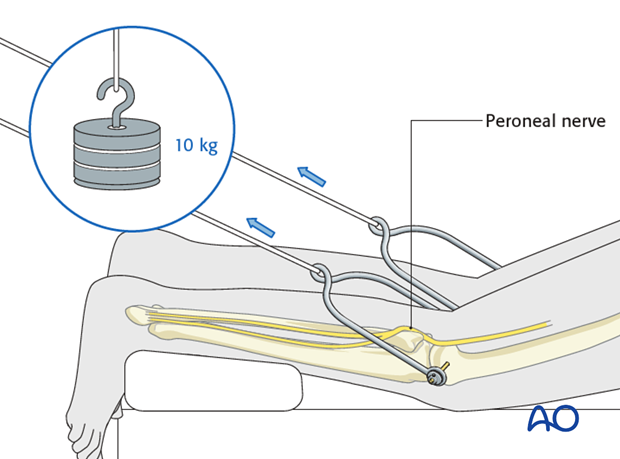
If additional length across the spinopelvic junction is needed, Schanz pins are inserted into the L5 pedicle and ilium, with the same technique and trajectory as the final spinopelvic fixation screws. The universal distractor is placed over these pins to achieve the desired length.
Note
Good bone quality is required for this technique to be effective. It is not recommended for patients with metabolic bone disease.
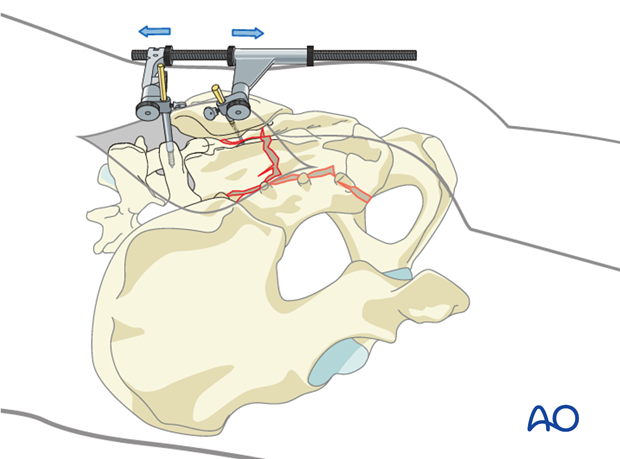
Reduction of anterior dislocation
After sacral laminectomy, elevators are placed between the sacral nerve roots into the fracture.
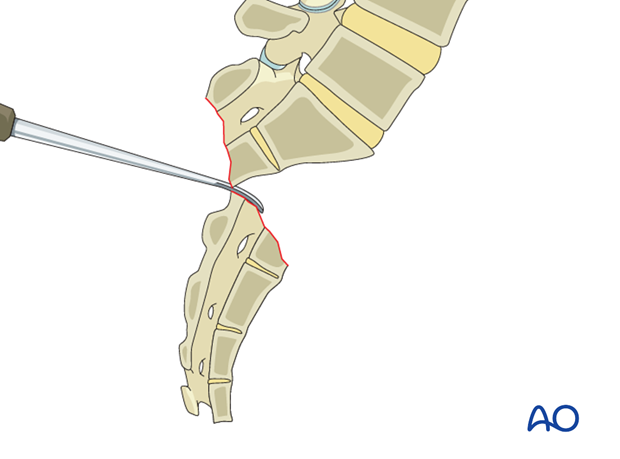
The fracture is further mobilized by prying apart.

A 4.0 mm Schanz pin is placed in between the S1 and S2 nerve roots into the upper sacrum to act as a joystick.
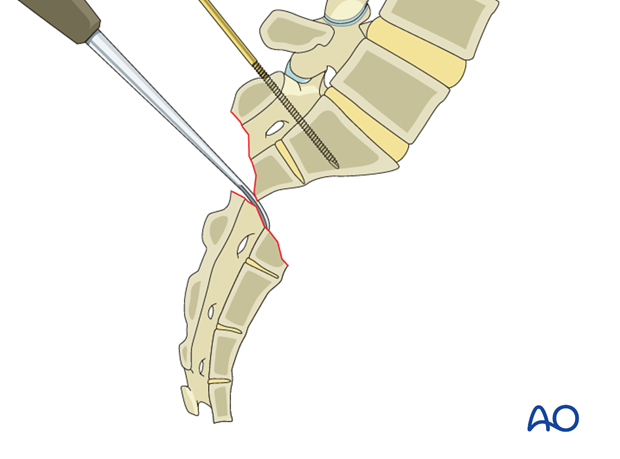
The Schanz pin can be used to translate and rotate the upper sacrum as desired to achieve reduction.
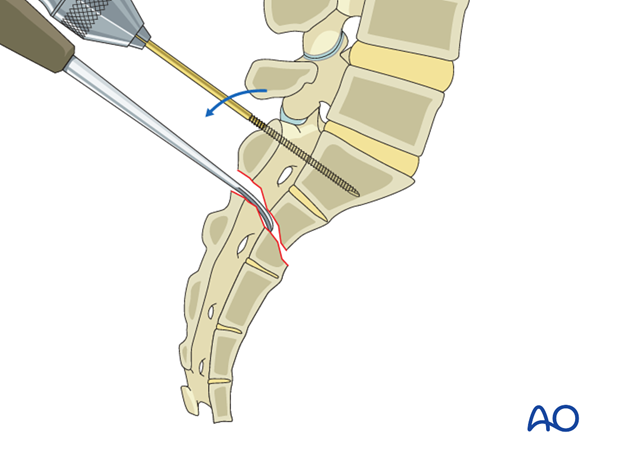
Reduction of posterior dislocation
After sacral laminectomy, elevators are placed between the sacral nerve roots into the fracture.
The fracture is further mobilized by prying apart.
Once the curved elevator has accessed the length of the fracture it may be rotated 180 ° around its axis before prying to further improve alignment.
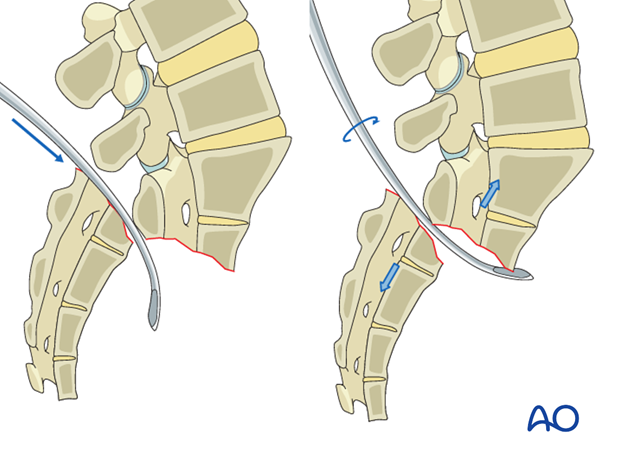
A 4.0 mm Schanz pin is placed in between the S1 and S2 nerve roots into the upper sacrum to act as a joystick.

A ball spike pusher is placed between the nerve roots onto the dorsum of the lower sacrum to translate the lower sacrum anteriorly while the Schanz pin is used to translate the upper sacrum posteriorly and rotate as desired to achieve reduction.

5. Insertion of the IS screws
Before beginning an ISS screw fixation procedure, appropriate preoperative planning for screw type and location needs to be completed.
Following reduction, the IS screw is inserted.
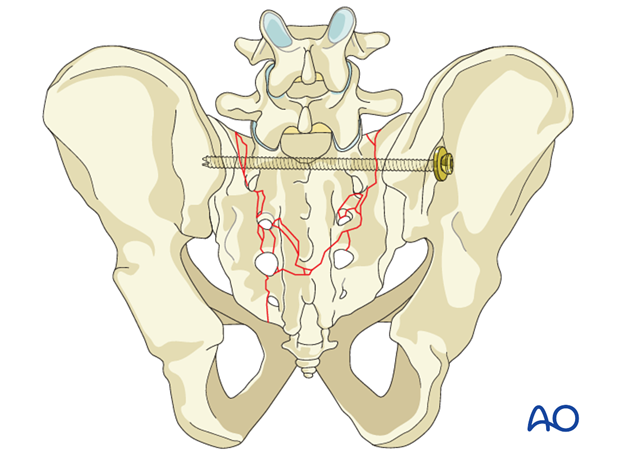
6. Insertion of the pedicle screws
Pedicle screws are inserted bilaterally in L5 and connected with the rod. If there is concern regarding fixation to L5, then more cranial fixation levels can be added.

7. Iliac screw insertion
Iliac screws are inserted in either of the three potential locations

8. Insertion of the connection rod
It is important that the iliac screw heads and connecting rods lie flush to the bone. Avoiding prominent hardware prevents soft tissue irritation.
With a sacral entry point for the iliac screw there is less concern with screw prominence compared to iliac starting points.
Cut the permanent rods to the appropriate length. Attach it to the screws per the hardware system.
This technique is most reliable when reduction has already been achieved and provisionally stabilized for example with iliosacral screws. Spinopelvic fixation is therefore primarily being used as neutralization construct.
However, additional contouring of the rod may be necessary to achieve indirect reduction. This might consist of both under and over bending.
The final rod is prepared and attached to the pedicle screws bilaterally.
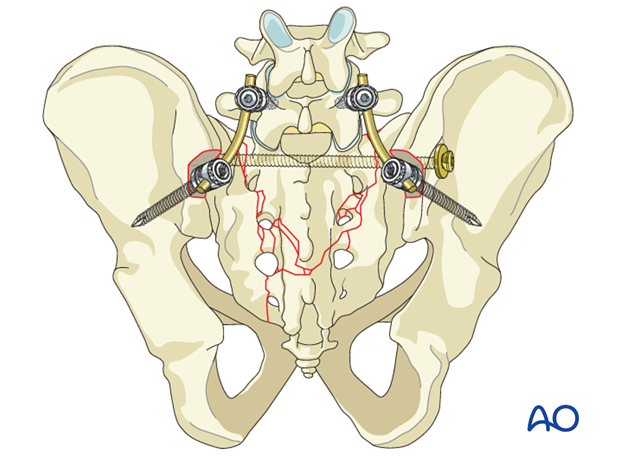
The construct should be further stabilized by the insertion of 1-2 transverse connectors at the level of the sacrum.

9. X-rays
After completion of internal fixation, confirm the final reduction and hardware position intraoperatively by AP, inlet and outlet radiographic imaging.

10. Aftercare following open reduction and fixation
Postoperative blood test
After sacral surgery, routine hemoglobin and electrolyte check out should be performed the first day after surgery and corrected if necessary.
Analgesics
Adequate analgesia is important. Non pharmacologic pain management should be considered as well (eg. local cooling and psychological support).
Anticoagulation
Prophylaxis for deep vein thrombosis (DVT) and pulmonary embolus is routine unless contraindicated. The optimal duration of DVT prophylaxis in this setting remains unproven, but in general it should be continued until the patient can actively walk (typically 4-6 weeks).
Drains
Drains, if used, are usually removed after 48 hours.
Wound dressing
Dressings should be removed and wounds checked after 48h, with wound care according to surgeon's preference.
Physiotherapy
The following guidelines regarding physiotherapy must be adapted to the individual patient and injury.
- It is important that the surgeon decide how much mechanical loading is appropriate for each patient's pelvic ring fixation. This must be communicated to physical therapy and nursing staff.
- For all patients, proper respiratory physiotherapy can help to prevent pulmonary complications and is highly recommended.
Upper extremity and bed mobility exercises should begin as soon as possible, with protection against pelvic loading as necessary. - Mobilization can usually begin the day after surgery unless significant instability is present.
Generally, the patient can start to sit the first day after surgery and begin passive and active assisted exercises. - Patients who are treated with spino pelvic fixation constructs are typically allowed to bear weight as tolerated unless precluded by other injuries.
The following applies to patients treated without spinopelvic fixation:
- For unilateral injuries, gait training with a walking frame or crutches can begin as soon as the patient is able to stand with limited weight bearing on the unstable side.
- In unstable unilateral sacral injuries, weight bearing on the injured side should be limited to "touch down" (weight of leg). Assistance with leg lifting in transfers may be necessary.
- Progressive weight bearing can begin according to anticipated healing. Significant weight bearing is usually possible by 6 weeks but use of crutches may need to be continued for three months.
- Fracture healing and sacral alignment are monitored by regular X-rays every 4-6 weeks until healing is complete.
Bilateral unstable sacral fractures and spinopelvic dissociation
Extra precautions are necessary for patients with bilateral unstable sacral fractures and spinopelvic dissociation. Physiotherapy of the torso and upper extremity should begin as soon as possible. This enables these patients to become independent in transfer from bed to chair.
Patients with bilateral unstable sacral fractures and spinopelvic dissociation who are treated with spino pelvic fixation constructs are typically allowed to bear weight as tolerated unless precluded by other injuries.
The following applies to patients treated without spinopelvic fixation:
- For the first few weeks, wheelchair ambulation may be necessary. After 3-4 weeks walking exercises in a swimming pool are started.
- After 6 weeks, if pain allows, the patient can start walking with a three point gait, with less weight bearing on the more unstable side.
Full weight bearing is possible after complete healing of the bony or ligamentous legions, typically not before 12 weeks.
